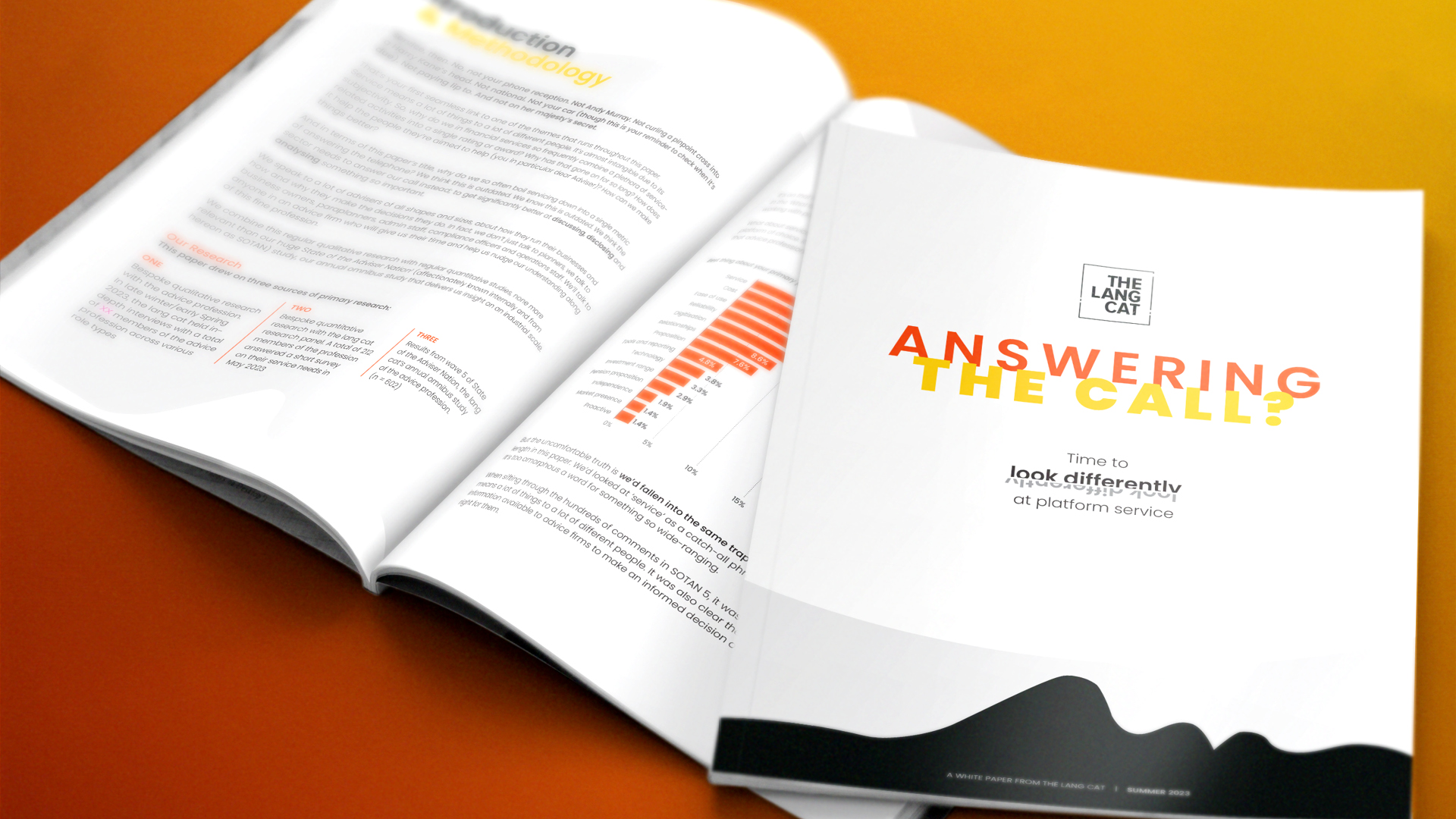Last week, the FCA published TR13/5, positioning it as an early report card on how advisers are doing with their implementation of RDR. Accompanied by some challenging research from NMG on how consumers are responding so far to Adviser Charging and Scope of Service disclosure, TR13/5 particularly piqued ourÃÂ curiosity at lang cat HQ.
Why? All FCA papers are of phenomenal interest, of course. But this one struck a special chord as we’ve had banks of felines poring over provider charges documentation in recent weeks. There may be something you can BUY NOW as the result of that. Just saying.
TR stands for Thematic Review. The FCA’s currently doing this in three stages ‘to assess investment advisory firms’ approaches to implementing the RDR.
TR13/5 reports on the outcome of the first stage of the review. As you might expect, it’s gold stars for some and jotters down trousers for others. If you haven’t got to it yet, it’s well worth a read. Although the focus is on disclosure of Adviser Charges TR13/5 and the NMG research between them draw out two important considerations around the use of platforms.
How much? And what is it that you do again?
The first consideration is a general one. Disclosure to consumers. Headline concerns from the FCA here were some adviser firms, not providing clients with some or all charges in cash terms’ and/or not being clear what ongoing services they would provide.
Some definite parallels here with our findings for platform charges when working on the Guide. There’s an interesting debate to be had about fixed verses ad valorem pricing for platforms. And, where ad valorem pricing is used, how that’s disclosed meaningfully to consumers. Ad valorem is still The One True Way for the vast majority of platforms, sometimes combined with a fixed fee element. It tends to be cheaper for those with smaller portfolios and pricier for those with larger ones. ÃÂ It’s one thing to know that instinctively, but we found pricing comparisons expressed in cash terms threw that issue into far greater relief. And extremely unsurprisingly indeed – the NMG research quite clearly shows consumers understand cash amounts better than bps.
Take a platform SIPP for example. And we didn’t make this up. Real comparisons. You’ll have to buy our Guide to find out the actual names, although we do confess that the £5m portfolio example for Provider 2 is an outlier at the top end of the scale. Provider 3 tops the following pack.
| £20,000 portfolio | £5,000,000 portfolio | |
| Provider 1 (fixed fee only) | £300 | £300 |
| Provider 2 (1% ad valorem) | £200 | £50,000 |
| Provider 3 (a combo) | £180 | £20,000 |
What’s that you say? Unfairly simplified? What about the services each provider offers? What about special deals? Surely we need to know about those to take a view on whether you’d ever actually pay top whack and, if you did, whether paying it represents value for money to the consumer? Yes, of course. But £300 versus £50,000? Those had better be some pretty worthwhile deals and services.
And that’s the other disclosure parallel. Articulating the real value and nature of the services you provide for that extra ad valorem cash. After spending a long time communing with a lot of paper and web copy to write our Guide, many platforms ain’t too good at it, it turns out.
Independent, REALLY?
The second consideration returns to the thorny subject of platforms and independence. A long standing feature of FSA reports on the platformverse, the FCA now adds its own concerns that some firms, while describing themselves as independent, were not offering a truly independent service. Jotter definitely down trousers for the firm that claimed to be independent but directed 98% of its business to one platform provider and also confirmed to its clients at a very early stage in the initial meeting that the advice would include using this platform.
Purely from a pricing point of view, the variety of shapes and charging outcomes we found across different platforms for different portfolio types would tend to support that view. As an independent you’d have to have an exceptionally tight target profile for your client base to have a chance of credibly defending a single platform position. Two platforms maybe. Just one. Unlikely.
Anyway. Hope you’ve found this an interesting read. Not bad for a thinly veiled advert for the lang cat’s 2013 Guide to Platform Pricing. Available now! Etc!




